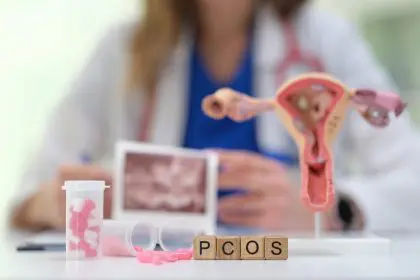Every woman approaching menopause is likely to notice dramatic changes in her skin. As estrogen levels fluctuate, many experience a range of issues, including dryness, loss of volume, adult acne, and wrinkles. Having recently crossed the threshold into this stage of life, I’ve seen firsthand how my once problem-free complexion has transformed into a dry, sensitive landscape reminiscent of a desert. So, what exactly is happening to our skin during this time, and how can we address these changes?
Understanding menopause and perimenopause
Menopause marks the end of a woman’s menstrual cycles, officially defined as having no periods for twelve consecutive months, typically occurring around age 51. The transition leading up to menopause is known as perimenopause, which can last anywhere from three to seven years or even longer. Dr. Ellen Marmur, a board-certified dermatologist, describes perimenopause as “puberty in reverse,” where estrogen levels begin to decline.
While most women start experiencing perimenopause in their 40s, some may notice changes in their 30s, while others may not see symptoms until after turning 50. The timeline and symptoms can vary significantly from one individual to another.
How perimenopause affects your skin
The hormonal fluctuations during perimenopause are responsible for many common skin issues. Dr. Marmur explains that as estrogen decreases, skin becomes drier, while male hormones like testosterone remain stable. This hormonal imbalance can lead to a perplexing combination of dryness and acne. Contrary to popular belief, dryness does not necessarily equate to fewer breakouts. Hormonal acne often manifests as cystic lesions deep within the skin, which are less dependent on oil production.
The impact of menopause on skin health
Once menopause is reached, estrogen levels drop significantly, leading to a host of skin aging issues. Dr. Mona Gohara, another board-certified dermatologist, notes that estrogen stimulates skin cells responsible for producing collagen and elastin. With lower estrogen levels, the production of these vital proteins decreases, resulting in dryness, wrinkles, and sagging skin. Studies indicate that collagen levels can decrease by up to 30% within the first five years after menopause.
Additionally, cumulative UV damage and the natural aging process contribute to skin dullness and the appearance of brown spots. The combination of these factors creates a perfect storm for skin health, but there are ways to prepare and combat these changes.
Common skin issues during menopause and solutions
Dr. Gohara emphasizes the importance of a skincare routine that addresses existing damage while preventing new issues from arising. Here are five common skin woes during menopause, along with effective strategies to combat them:
1. Hormonal acne: Unlike the acne of youth, menopausal acne often appears along the jawline and is characterized by dry skin. To combat this, consider using products with salicylic acid to unclog pores and reduce inflammation. If over-the-counter options are ineffective, dermatologists may prescribe retinoids or oral medications like spironolactone to address hormonal acne.
2. Fine lines and wrinkles: As collagen production slows, fine lines and wrinkles become more prominent. Incorporating retinol into your skincare routine can help stimulate collagen production and improve skin texture. Additionally, consider using peptides or seeking professional treatments like Botox or fillers for more immediate results.
3. Hair thinning: Many women experience hair thinning during perimenopause due to hormonal changes. To combat this, avoid damaging hair practices and consider topical treatments like minoxidil. Consulting with a dermatologist can also provide tailored solutions for hair loss.
4. Dryness: With estrogen depletion, skin loses its ability to retain moisture. To combat dryness, opt for hydrating cleansers and moisturizers containing hyaluronic acid and ceramides. Layering products can enhance moisture retention, and discussing hormone therapy options with your doctor may also be beneficial.
5. Laxity and sagging: As skin loses collagen and elastin, sagging becomes more noticeable. Regular use of retinol and antioxidants can help maintain skin firmness. For more significant results, consider professional treatments like laser therapy or radiofrequency treatments.
While the changes that come with menopause can be daunting, understanding the underlying causes and implementing effective skincare strategies can help you navigate this transition with confidence. Embrace this new chapter and prioritize your skin health with a proactive approach.
For more information on skincare during menopause, consult with a dermatologist who can provide personalized recommendations tailored to your unique skin needs.















